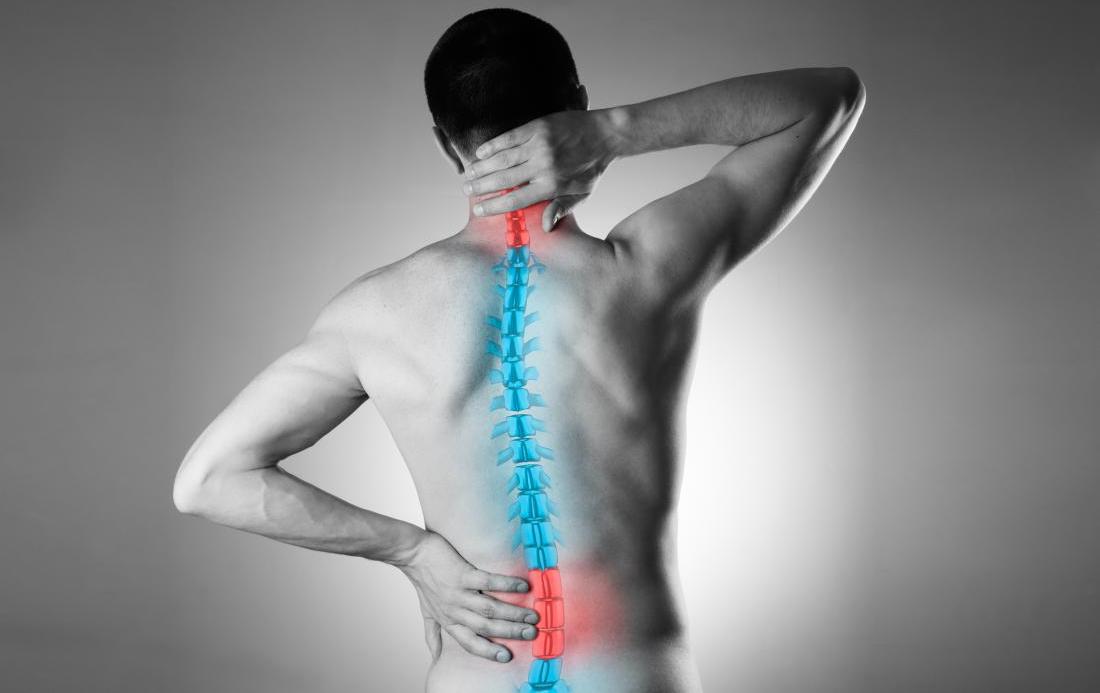
First aid for episodes of back and neck pain can work surprisingly well.
Here are some of the most effective first aid treatments you can try at home.
Pain medication
Two main types of medications can be very helpful for relieving many types of back pain: acetaminophen and non-steroidal anti-inflammatory drugs (NSAIDs).
- Acetaminophen (such as Tylenol) works by blocking the brain's perception of pain. It can be very effective and has little chance of any side effects. Patients with liver disease must check with their doctor before taking acetaminophen.
- NSAIDs work by limiting inflammation, which is often at least partially responsible for back pain. There are different types of NSAIDs, including ibuprofen (such as Advil, Motrin, or Nuprin), naproxen (such as Aleve or Naprosyn), and the newest class, COX-2 inhibitors, (such as Celebrex). This last type requires a prescription and is easier on the stomach lining than other NSAIDs. Patients with kidney problems, over 65, or with any history of stomach ulcer should check with their doctor before using NSAIDs.
Because acetaminophen and NSAIDs work differently, they can be used together, and some patients find that they are more effective that way.
Ice therapy
Muscle strain is a major cause of back pain.
Placing an ice pack on the area shortly after the occurrence of pain (within 48 hours) can help in the following ways:
- Reduces inflammation, which often contributes to the pain
- Numbs the sore tissues, acting as an anesthetic
- Slows the nerve impulses, interrupting pain signals to the brain
- Decreases tissue damage
- Aids in natural healing by rushing blood and nutrients to the affected area when the ice is removed
Heat therapy
Heat is also good for sore back muscles, especially after the first 48 hours has passed. Either dry heat (such as an electric heating pad) or moist heat (such as a hot bath or steamed towels) can be used to provide the following benefits:
- Enlarges the blood vessels, increasing the flow of oxygen and nutrients to the injured area.
- Stimulates the sensory receptors in the skin, which reduces the number of pain signals that are sent to the brain.
- Helps the tissues around the spine stretch more easily. This reduces stiffness and gives the back better flexibility, which is important for a healthy back.
Both heat and ice must be applied carefully to avoid further injury.
Stretching and exercise
The methods described above will hopefully reduce your pain enough to be able to do some physical therapy and exercise, which is essential for long-term recovery.
- Stretching should include the muscles, ligaments, and tendons in the back and around the spine, as well as your hamstring muscles (in the back of the thighs). For patients with chronic back pain, it may take weeks of stretching to get results, but the increased amount of motion gained can provide noticeable and long-term relief. To be most helpful, stretching exercises should be done twice a day. A good way to remember to stretch is to work it into your daily routines, such as stretching when you brush your teeth in the morning and evening.
- Regular exercise must be taken on slowly so that you don't make your pain worse or re-injure your back. Exercising your back increases the distribution of nutrients, which helps you recover from injury more quickly, and makes your back healthier overall. Exercise also reduces stiffness and strengthens muscles, preventing future injury and pain. Core muscles need to be strong enough to provide support for the spine and its surrounding structures.
Mindful techniques for chronic back pain
For patients with ongoing pain, some measure of relief can often be gained by focusing your mind on something other than the pain. Learning some relaxation and distraction techniques can make your brain pay less attention to the pain signals, which can make you feel better. For people who have not tried using the mindful technique to control pain, it may be hard to believe it works. But many patients who have tried a variety of chronic pain management techniques say that this is the most helpful - and say they like it because it puts them in control of their own state of being.
Final thoughts
If the pain is severe and/or lasts more than a couple of weeks, it is usually advisable to see a health care professional—your primary care physician, chiropractor, or another type of spine specialist.
We believe that it’s the combination of treatment from an experienced, well-qualified spine care professional and your own initiative that gives you the best chance for successfully managing your back condition.
Precision Pain Care and Rehabilitation has two convenient locations in the Richmond Hill – Queens and New Hyde Park – Long Island. Call the Richmond Hill office at (718) 215-1888, or (516) 419-4480 for Long Island office, to arrange an appointment with our Interventional Pain Management Specialist, Dr. Jeffrey Chacko.













